As we wait for hockey to return, front offices, coaching staff, and fans alike have plenty of free time to look ahead and plan for the future. For the coaching staff, the job remains to prep for any possible end of season/playoff scenario that might arise. Front offices have more time to look forward to what comes next, however. With the possibility of an abbreviated offseason on the horizon, GMs around the league need to be as prepared as possible for what will no doubt be a unique NHL Entry Draft and free agency period.
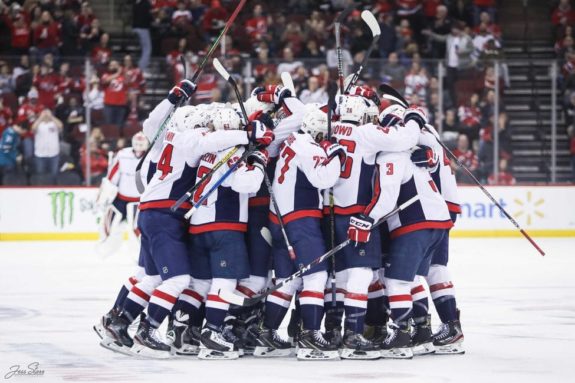
For the Washington Capitals, GM Brian MacLellan finds himself with just over $71 million committed to 16 players for the start of the 2020-2021 season. With the Salary Cap projected to increase, the Capitals could have a little more wiggle room than they’ve had in previous offseasons. However, the team is still facing some tough decisions as they look to remain competitive in 2021 and beyond.
Cap on the Rise
The NHL announced in early March that the salary cap was expected to increase from the current limit of $81.5 million. Initial projections had next year’s number landing anywhere from $84 to $88.2 million. A jump to $88 million would have represented the largest year-to-year increase since the cap came into place in 2005. But then the coronavirus happened.
With the NHL shutting down, a significant increase seems unlikely. The cap could even end up staying the same due to the loss of revenues. If the cap does increase, a more likely scenario sees the number ending up around the $84 million range. That would leave Washington with roughly $13 million to spend and seven players to sign.
RFAs to Sign
The Capitals have three restricted free agents: Travis Boyd, Brendan Leipsic, and Jonas Siegenthaler. All three make less than a million dollars and are likely candidates to be qualified and return next season. Of the three, Siegenthaler makes the most sense to sign to a multi-year extension. Siegenthaler will be 23 when the 2020-21 season begins and brings some much-needed youth to an aging Caps blueline. A bridge deal for two-three years with a cap hit under $2 million makes a lot of sense here.
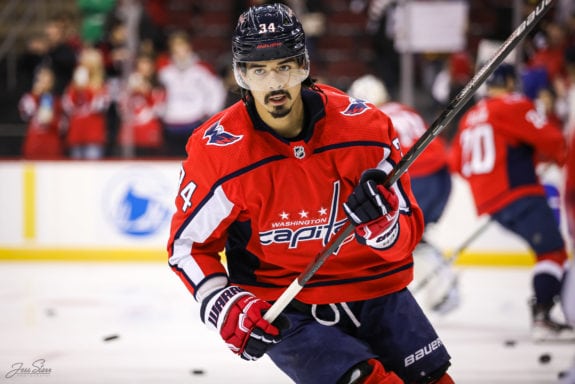
Both Leipsic and Boyd are solid depth forwards that the team would likely want to bring back next year provided their cap hits stay relatively low. New one-year deals around the $1 million mark could make sense for the team. If either Leipsic or Boyd were to move on, they would likely be replaced internally with minimal change in cap hit. Expect the Capitals to allocate no more than $4 million for these three RFA contracts, or their potential replacements, next season.
What to Do with Holtby
Assuming the three RFAs return at those projected numbers, Washington would be looking at a commitment of roughly $75 million to 19 players next season. That leaves four unrestricted free agents and anywhere from $9 to $13 million to work with (with $9 million being more likely). The biggest decision will come in goal. Braden Holtby is set to be a UFA and will be looking for a raise from his current $6.1 million cap hit.
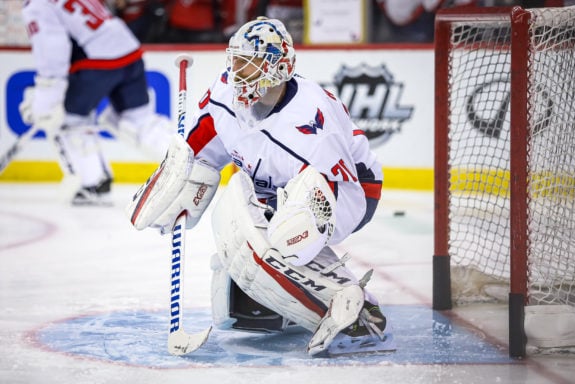
Holtby will be 31 when next season begins and has seen his numbers decline in recent years. His three worst seasons in the NHL have come in the last three years. Despite this, he has still been one of the most productive postseason goalies in NHL history. He was a massive part of the 2018 Stanley Cup run and remained the Capitals starter when the season got suspended despite his struggles.
Related: Top 3 All-Time Capitals Goalies
Nevertheless, it’s hard to see the Capitals investing significant money in Holtby with Ilya Samsonov ready to step into the number one role. The Florida Panthers offer a cautionary tale for anyone considering signing an aging goalie to a big ticket. Sergei Bobrovsky is just one year into a seven-year, $70 million deal and it already looks like a misstep for the Panthers.
Holtby likely won’t cash in on a deal like that but a lot of teams are desperate for good goaltending. A five-year deal in the $7-8 million range isn’t out of the question for Holtby but he won’t be finding that in Washington. The goaltending market would have to cool significantly for Holtby to return to Washington for an 11th season.

A more likely scenario would see the Capitals pursue a competent veteran goalie to come in and push Samsonov next year. Cam Talbot and Jaroslav Halak are just two of the potential UFA options that could solidify a tandem with Samsonov. Phoenix Copley has two years left at a cap hit of $1.1 million and remains an option as well, with Vitek Vanecek waiting in the wings for the American Hockey League’s Hershey Bears. The Caps will need to add a veteran goalie one way or another this summer, but it remains to be seen which tier of free agent they pursue.
UFA Options
Beyond Holtby, the Capitals have a trio of UFAs that they will need to make decisions on. Radko Gudas is unlikely to return, expect the Caps to let their prospects battle it out for the seventh spot on the blue line instead. Ilya Kovalchuk had a very small sample size in Washington, scoring four points in seven games. Kovy did look rejuvenated in Montreal however, and makes sense to return to a Caps roster that is full of veterans. One year and $1-1.5 million could work in DC but if Kovalchuk wants to cash in again this summer he will have to look elsewhere.
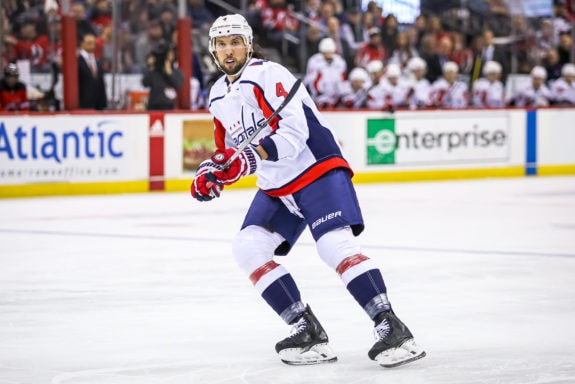
That leaves only deadline pick-up Brendan Dillon remaining. Of all the 29-year old defensemen on the Capitals roster (there are four of them), Dillon is without question the most valuable. The hard-nosed defender is reliable in his own zone and provides a nice balance to the team’s offensive options like John Carlson and Dmitry Orlov. Dillon’s last deal in San Jose paid him $3.27 over five years. A raise seems likely. Something in the four-year, $4 million range could make sense in Washington.
Related: Revisiting the Brayden Schenn Trade
Projecting roughly $4 million for the three RFAs, another $3 million in net, and $6 million for Dillon, Kovalchuk, and a seventh defenseman brings the Capitals right up to the lower end of the projected cap at $84 million. If the cap does end up staying around $81.5 million, Washington will be one of many teams in serious trouble. Regardless of how things play out, don’t expect the Caps to cash in big in free agency. Most changes will come internally with the team likely to give their young prospects a long look in training camp.
Looking Ahead
Even if the salary cap were to jump to $88 million, Washington would still be unlikely to push that number when you consider the bill that is about to come due next summer. Alex Ovechkin, Jakub Vrana, and Samsonov will all be in line for new deals before the 2021-22 season.
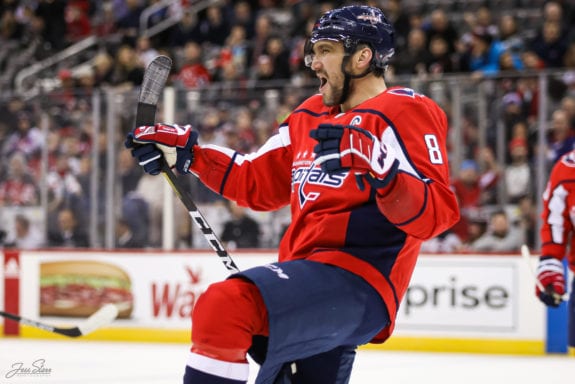
Currently, Ovechkin has a cap hit of $9.538 million, Vrana’s bridge deal nets him $3.35 million a year, while Samsonov will enter the final year of his entry-level pact next season. All three will need to be given raises if the Capitals expect to keep them around. Ovi’s next deal will come in north of $10 million and could even push $11 million. Vrana has upped his value significantly this season and should be looking at a new contract in the $6-million range. Samsonov is harder to project but if he is able to reign in the starting job next season, negotiations on a bridge deal would likely start no lower than $3.5 million.
Clearly, the cap crunch is going to remain tight in Washington. The Capitals already have $57.3 million committed to 13 players in 2021-22. Add in any projections for Ovechkin, Vrana, and Samsonov and that number gets close to $80 million in a hurry. These long-term considerations make a new-deal for Holtby all the more unlikely and even make a potential pact for Dillon a tricky negotiation. Don’t expect MacLellan to hand out too many multi-year contracts this summer. He will need to make sure some money is coming off the books next summer if he expects to keep this core together and extend the team’s Cup window into 2022.